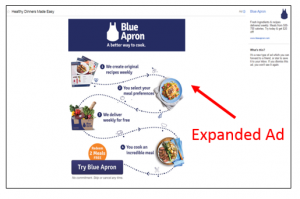
So much of your marketing work is trying to figure out how to reach people online and get them to react to or engage with your content.
You do focus groups, study the market, narrow your demographic, and do anything else you can do to make sure that your message lands with the right people and gets the response you want.
But one of the most important things you need to do is answer the question “How do people really behave online?” Doing that will help you understand better than just about anything else how to reach your audience.
CodeFuel recently conducted extensive research on this topic, and we have the answers for you:
This infographic originally created by CodeFuel.com. Love this infographic? Access it here & embed it into your site!
You’ve been hearing about the importance of mobile for a while now, but if the message hasn’t gotten through, it’s time you face the truth: Mobile is king.
Mobile Web is Preferred
You’ve been hearing about the importance of mobile for a while now, but if the message hasn’t gotten through, it’s time you face the truth: Mobile is king.
More people than ever now have smart phones or tablets, and more people around the world are expected to get one of these devices. Not only do more people own these devices, but more and more people are using them to access content online.
In the past, people primarily used apps to get information from their devices. Browsing was clunky, so they used the dedicated apps of brands they preferred to shop or do other business.
That’s changed.
Mobile web is now the preferred way to access content. Our research found that 23 percent of people are searching for information through the mobile web, while only 15 percent are using apps to access content. Another 14 percent are using their tablets to access content.
Overall, 52 percent of people are using mobile devices to browse online, while 48 percent are using laptops or PCs to go online.
If you haven’t already optimized your site for mobile search, you need to do it now. If you haven’t already optimized your site design for mobile, you are woefully behind.
Google and the Early Birds Reign
It may come as no surprise to you that the majority of people get their content through Google. However, you may be surprised to learn that content websites are the second most popular way for people to get and find information.
That means that people are bookmarking their favorite sites and returning to them regularly. It also means that people are using in-site search to find content on that site and on other sites.
Our research also found that the most popular time of day for people to browse online is in the morning. Approximately 73 percent of people browse in the morning to get the latest updates. However, 54 percent said they also look for the latest updates in the evening, which means that many are returning several times a day.
Really, no time of day appears to be “bad” for posting updates. Approximately 40 percent said they check at noon, 47 percent said the afternoon, and 46 percent said night time.
Noon emerged as the most popular time of day to hit the Internet to take a break (43 percent said they did this), while the afternoon was the most popular time for work or study (15 percent identified this as the best time).
The most people identified night time as a time that they don’t visit the web (22 percent).
It is important that you understand these time frames for posting important content. For example, if you are posting lengthy, informative content, the best time to post is likely going to be in the afternoon when people are more prone to be looking for information for work or study.
Ads Must Be Interesting
Again, this may seem obvious, but ads have to be interesting if you expect people to sit through them.
Our research found that 43 percent of people will watch a video ad all the way through so long as it has interesting content. And 79 percent of people said that they prefer to get free content, even if it is supported by ads. Therefore, people are open to seeing your ads, but you have to make the most of this opportunity.
We found that the most common reason for people to click on an ad is that it had an interesting offer (39 percent of people said this), while ads from a preferred brand and ads with relevant content were the second and third most appealing choices (28 percent and 24 percent response rate, respectively).
A quarter of people said that there was nothing that would make them click on an ad.
It is important that you take these things into consideration when creating your ads and determining their placement. Create funny, interesting and relevant ads that will capture your audience’s attention.
Online behavior is always changing. We’ll be here to do the research so that you have the most current information on which to build your marketing strategy and meet your goals.
Digital & Social Articles on Business 2 Community(59)





